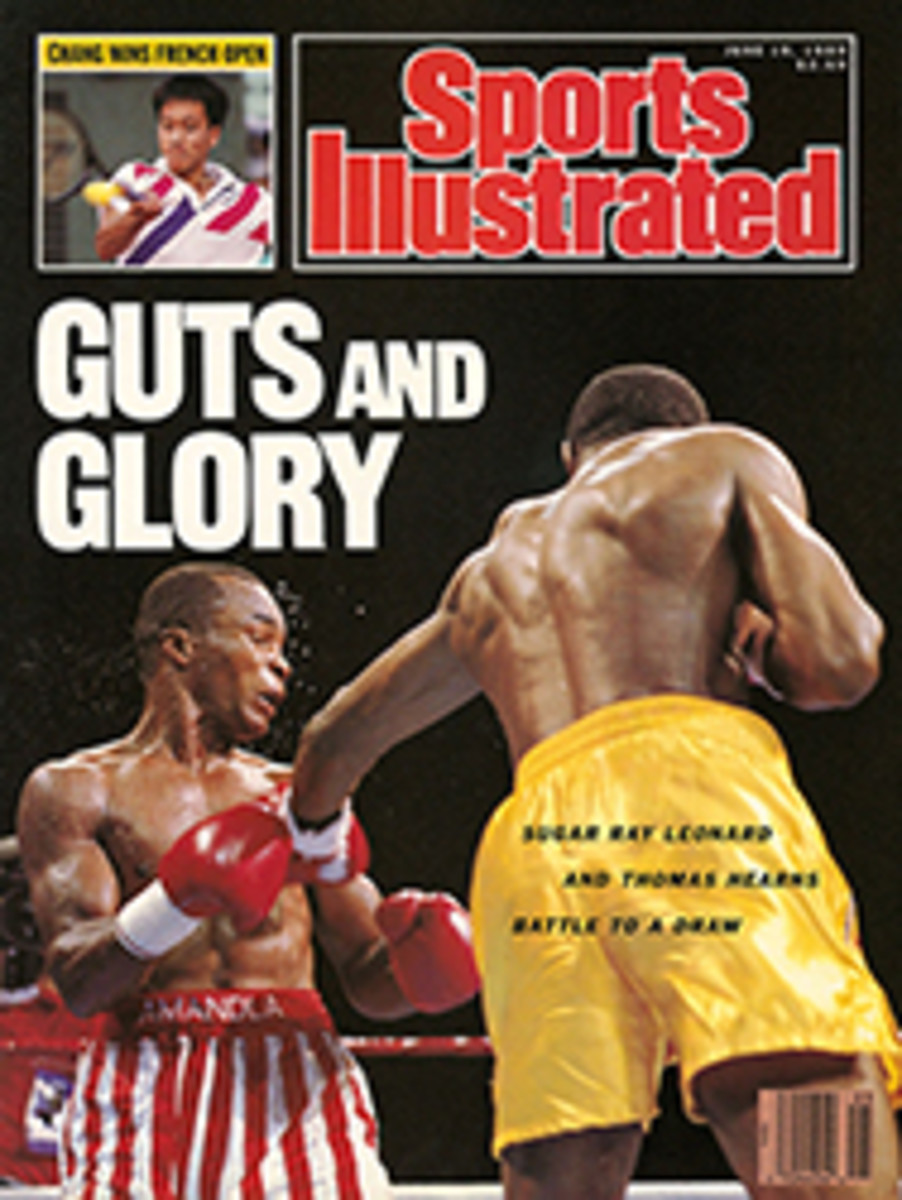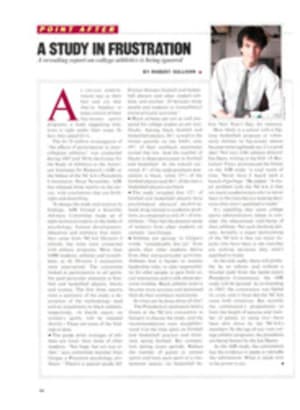
A STUDY IN FRUSTRATION
As college administrators tear at their hair and cry that they're helpless to keep control of their big-money sports programs, a study suggesting solutions is right under their noses. In fact, they asked for it.
The $1.75 million investigation of "the effects of participation in intercollegiate athletics" was conducted during 1987 and '88 by the Center for the Study of Athletics at the American Institutes for Research (AIR) at the behest of the NCAA's Presidents Commission. Since November, AIR has released three reports on the survey, with conclusions that are forthright and disturbing.
To design the study and analyze its findings, AIR formed a Scientific Advisory Committee made up of eight technical experts in the fields of psychology, human development, education and statistics; four members came from NCAA Division I schools, but none were connected with athletic programs. More than 4,000 students, athletes and nonathletes, at 42 Division I institutions were interviewed. The committee looked at participation in all sports, but paid particular attention to football and basketball players, blacks and women. The first three reports were a summary of the study, a description of the methodology used and an installment on black athletes, respectively. (A fourth report, on women's sports, will be released shortly.) These are some of the findings to date:
•The grade point averages of athletes are lower than those of other students. "Not huge, but not tiny either," says committee member Joan Girgus, a Princeton psychology professor. "There's a quarter-grade difference between football and basketball players and other student-athletes, and another .25 between those people and students in [nonathletic] extracurricular activities."
•Black athletes are not as well prepared for college studies as are non-blacks. Among black football and basketball players, 58% scored in the lowest quartile on the SATs; only 19% of their nonblack teammates scored that low. And the number of blacks is disproportionate in football and basketball. At the schools surveyed, 4% of the undergraduate population is black, while 37% of the football players and 56% of the men's basketball players are black.
•The study revealed that 12% of football and basketball players have psychological, physical, alcohol-related, drug-related or academic problems, as compared to only 4% of non-athletes. "They feel the greatest sense of isolation from other students on campus," says Girgus.
•Athletes are getting, in Girgus's words, "considerably less joy" from sports than other students derive from their extracurricular activities. Athletes find it harder to assume leadership roles, to take responsibility for other people, to gain from social interaction and to talk about personal troubles. Black athletes tend to become more anxious and depressed than do their nonblack teammates.
So what can be done about all this?
The Presidents Commission held a forum at the NCAA convention in January to discuss the study, and the recommendations were straightforward: Cut the time spent on football and basketball practice and eliminate spring football. Bar competition during exam periods. Reduce the number of games in certain sports and limit each sport to a one-semester season—no basketball before New Year's Day, for instance.
How likely is a school with a big-time basketball program to voluntarily shorten its big-money season because some eggheads say it's a good idea? Not very. LSU athletic director Joe Dean, writing in the Feb. 15 Basketball Times, pronounced the forum on the AIR study "a total waste of time. Never have I heard such a bunch of garbage." He added, "A major problem with the NCAA is that too many academicians who've never been in the trenches are making decisions they aren't qualified to make."
It's appalling that some college sports administrators refuse to consider the educational well-being of their athletes. Yet such thinking persists. Actually, a major shortcoming of the NCAA is that too many ex-jocks who have been in the trenches are making decisions they aren't qualified to make.
In the end, sadly, there will probably be no reform, and without a forceful push from the battle-weary Presidents Commission, the AIR study will be ignored. At its founding in 1983, the commission was fueled by crisis, and it force-fed the NCAA some bold initiatives. But recently the commission's propositions—to limit the length of seasons and number of games, to name two—have been shot down by the NCAA's members. In the tug-of-war over college athletic programs, the presidents are being beaten by the Joe Deans.
In the AIR study, the commission has the evidence it needs to rekindle the reformation. What it needs now is the power to act.
PHOTO
HEINZ KLUETMEIER

